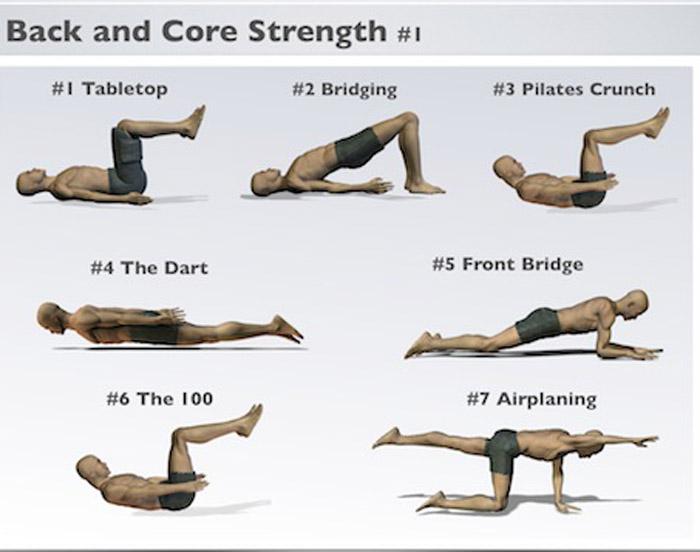In a world where screens dominate our daily lives and slouching has become second nature, the quest for better posture often feels like an uphill battle. Yet, amidst the array of ergonomic chairs and posture-correcting gadgets, a powerful and often overlooked solution stands strong: strength training. This form of exercise, typically celebrated for its ability to sculpt muscles and boost physical prowess, holds a secret weapon against the creeping curve of poor posture. By engaging in targeted strength training, individuals can unlock a newfound alignment, where the body stands tall and confident. This article delves into the fascinating connection between strength training and posture improvement, unraveling how a commitment to building strength can transform not just the body, but the way we carry ourselves through life.
Understanding the Mechanics of Posture and Muscle Engagement
The intricate dance between posture and muscle engagement is akin to a finely tuned orchestra, where each instrument plays a crucial role in creating harmony. Muscles, when engaged correctly, act as stabilizers, maintaining the body’s alignment and reducing strain on joints and ligaments. This engagement begins at the core, often referred to as the body’s powerhouse, extending its influence through the limbs. A well-structured strength training regimen focuses on activating these core muscles, fostering a solid foundation that supports the spine and promotes an upright posture.
Consider the following key aspects of muscle engagement for optimal posture:
- Core Stability: A strong core not only supports the lower back but also ensures the pelvis remains in a neutral position, aiding in overall balance.
- Shoulder Alignment: Engaging the muscles around the shoulders prevents rounding, which is a common cause of poor posture.
- Spinal Support: Targeting the erector spinae muscles helps in maintaining the natural curves of the spine, reducing the risk of back pain.
By understanding these mechanics, individuals can harness the power of strength training to not only build muscle but also enhance their posture, leading to improved health and confidence.

Harnessing Core Stability for an Aligned Spine
Core stability serves as the keystone for maintaining an aligned spine, acting as a dynamic foundation that supports and enhances posture. When the core muscles—abdominals, obliques, erector spinae, and transverse abdominis—are strong and engaged, they work harmoniously to keep the spine in its natural, neutral position. This intrinsic support system not only mitigates the risk of back pain but also contributes to a poised and confident stance.
Incorporating exercises that focus on core stability into your strength training regimen can yield significant improvements in spinal alignment. Consider adding the following to your routine:
- Planks: Enhance the engagement of the entire core, promoting a balanced and stable spine.
- Russian Twists: Target the obliques, assisting in rotational stability and reducing spinal torsion.
- Bird Dogs: Encourage coordination and core activation, crucial for maintaining spinal neutrality during movement.
By prioritizing core stability, you create a resilient and supportive environment for your spine, paving the way for a naturally aligned posture.
Strengthening Key Muscles for Postural Support
To maintain an upright and balanced posture, it is essential to focus on strengthening the muscles that provide core stability and spinal alignment. These muscles act as a support system, much like the scaffolding of a building, ensuring that the body remains upright and functional. Core muscles play a pivotal role, encompassing not just the abdominal muscles but also the obliques, lower back, and pelvic floor. Engaging these muscles through targeted exercises can lead to a more stable and robust posture.
- Planks: An excellent exercise for activating the entire core.
- Deadlifts: Focuses on the lower back and hamstrings, crucial for postural support.
- Bridges: Strengthens the glutes and lower back, promoting a neutral spine.
- Bird Dogs: Enhance balance and coordination while engaging the core.
Equally important are the upper back and shoulder muscles. Strengthening these areas helps to counteract the forward-leaning tendencies caused by prolonged sitting or screen time. Exercises such as rows, reverse flys, and shoulder blade squeezes are effective in promoting a strong upper back, encouraging the shoulders to rest back and down, and aligning the spine naturally. By incorporating these exercises into your routine, you pave the way for a healthier, more confident posture.

Incorporating Targeted Exercises into Your Routine
To truly enhance your posture through strength training, it’s essential to focus on specific exercises that target the muscles responsible for maintaining an upright and balanced stance. These exercises should be seamlessly woven into your regular workout routine, ensuring that you’re not only building strength but also promoting structural alignment. Here are some key exercises to consider:
- Planks: Engage your core and back muscles, providing a stable foundation for your spine.
- Rows: Strengthen your upper back and shoulders, counteracting the forward slump from desk work.
- Deadlifts: Improve your lower back strength and posture by emphasizing proper lifting techniques.
- Wall Angels: Enhance shoulder mobility and posture by focusing on alignment and muscle activation.
Incorporating these exercises with intention can lead to noticeable improvements in your posture over time. By prioritizing form and consistency, you’ll find that a stronger body naturally aligns itself, creating a more poised and confident presence.
Wrapping Up
As we conclude our exploration of the connection between strength training and better posture, it’s clear that the benefits extend far beyond the aesthetic. With each lift, stretch, and movement, we not only fortify our muscles but also build a resilient framework that supports our daily lives. The symbiotic relationship between strength and posture is a testament to the body’s remarkable ability to adapt and thrive. So, as you embark on your journey of strength training, remember that you are not just sculpting your physique; you are crafting a foundation for a more aligned, confident, and empowered self. Embrace the transformation, one rep at a time, and stand tall in the knowledge that you are investing in a healthier future.
